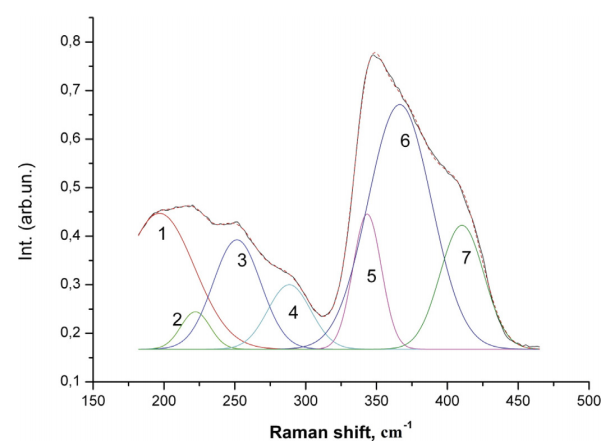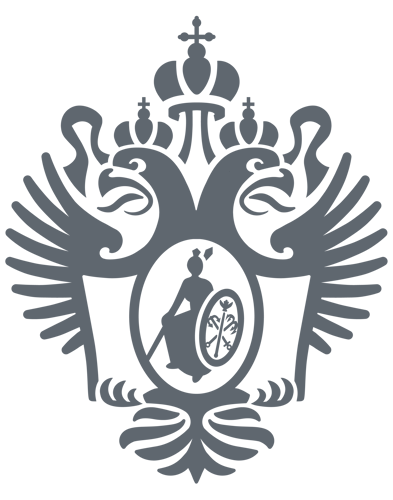03.02.2017 СПбГУ открыл междисциплинарную площадку для школьников


3 февраля в Санкт-Петербургском государственном университете на базе образовательного ресурсного центра по направлению физика Научного парка СПбГУ состоялось открытие междисциплинарной площадки для школьников. С директорами, учителями и учениками школ Петербурга и Ленинградской области встретились ректор СПбГУ Николай Кропачев, декан физического факультета СПбГУ, президент НИЦ «Курчатовский институт» Михаил Ковальчук и директор Научного парка Университета Сергей Микушев.
|
> Подробнее: СПбГУ открыл междисциплинарную площадку для школьников |
Scientific Reports 7, Article number: 41991, Pages 1-10
E.G. Vlakh, E.V. Grachova, D.D. Zhukovsky, A.V. Hubina, J.R. Shakirova, A.S. Mikhailova, V.V. Sharoyko, S.P. Tunik, T.B. Tennikova
Self-assemble nanoparticles based on polypeptides containing C-terminal luminescent Pt-cysteine complex
Scientific Reports 7, Article number: 41991, Pages 1-10
DOI: 10.1038/srep41991

The growing attention to the luminescent nanocarriers is strongly stimulated by their potential application as drug delivery systems and by the necessity to monitor their distribution in cells and tissues. In this communication we report on the synthesis of amphiphilic polypeptides bearing C-terminal phosphorescent label together with preparation of nanoparticles using the polypeptides obtained. The approach suggested is based on a unique and highly technological process where the new phosphorescent Pt-cysteine complex serves as initiator of the ring-opening polymerization of α-amino acid N-carboxyanhydrides to obtain the polypeptides bearing intact the platinum chromophore covalently bound to the polymer chain. It was established that the luminescent label retains unchanged its emission characteristics not only in the polypeptides but also in more complicated nanoaggregates such as the polymer derived amphiphilic block-copolymers and self-assembled nanoparticles. The phosphorescent nanoparticles display no cytotoxicity and hemolytic activity in the tested range of concentrations and easily internalize into living cells that makes possible in vivo cell visualization, including prospective application in time resolved imaging and drug delivery monitoring.
03.02.2017 СПбГУ открыл междисциплинарную площадку для школьников
Сегодня, 3 февраля, в Санкт-Петербургском государственном университете на базе образовательного ресурсного центра по направлению «Физика» Научного парка СПбГУ состоялось открытие междисциплинарной площадки для школьников. С директорами, учителями и учениками школ Петербурга и Ленинградской области встретились ректор СПбГУ Николай Кропачев, декан физического факультета СПбГУ, президент НИЦ «Курчатовский институт» Михаил Ковальчук и директор Научного парка Университета Сергей Микушев.
|
> Подробнее: СПбГУ открыл междисциплинарную площадку для школьников |
02.02.17 Начата работа по проекту "Исследование особенностей антипрививочного движения по данным социальных медиа". Метод исследования - сбор и анализ контента из групп социальной сети «ВКонтакте». Научный руководитель проекта Виктория Ивановна Дудина, доцент кафедры прикладной и отраслевой социологии.
Journal of Non-Crystalline Solids 457 (2017) 164–168
D.V. Pan'kin, М.V. Sukhanov, Yu.S. Tver'yanovich, М.F. Churbanov
«Investigation of structure of GeS1.35 glasses with the use of isotopically enriched germanium and Raman scattering spectroscopy»
Journal of Non-Crystalline Solids 457 (2017) 164–168
DOI: 10.1016/j.jnoncrysol.2016.11.038

The samples of GeS1.35 glasses were synthesized with germanium and sulfur of natural isotopic composition and with isotopically enriched germanium (72Ge, 74Ge, 76Ge). The glasses were investigated by the method of Raman scattering spectroscopy (RSS). It was shown that GeS4/2 tetrahedrons and structural units containing Ge\\Ge homobonds are present in glasses. The quantum-mechanical calculation of the frequency of fundamental vibrational modes in glass network was carried out. Their dependencies on the atomic mass of germanium were used for identification of bands in RS (Raman scattering) spectra.









